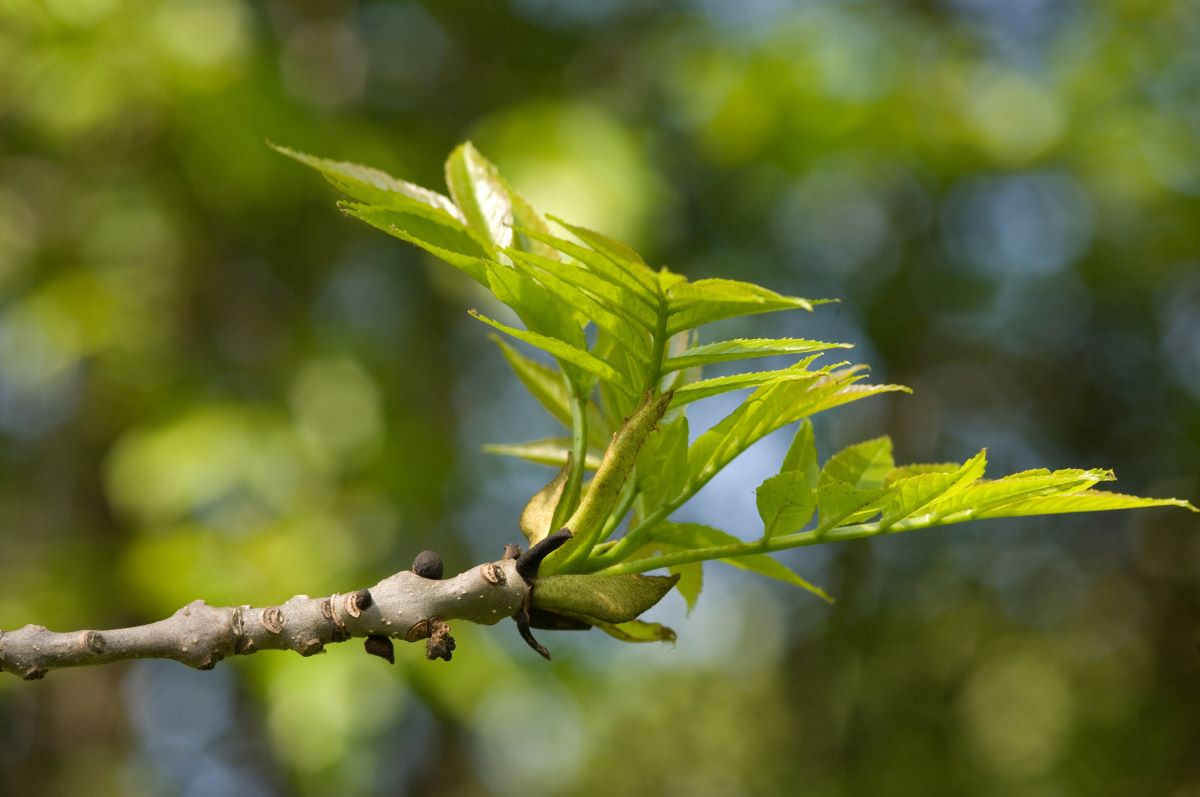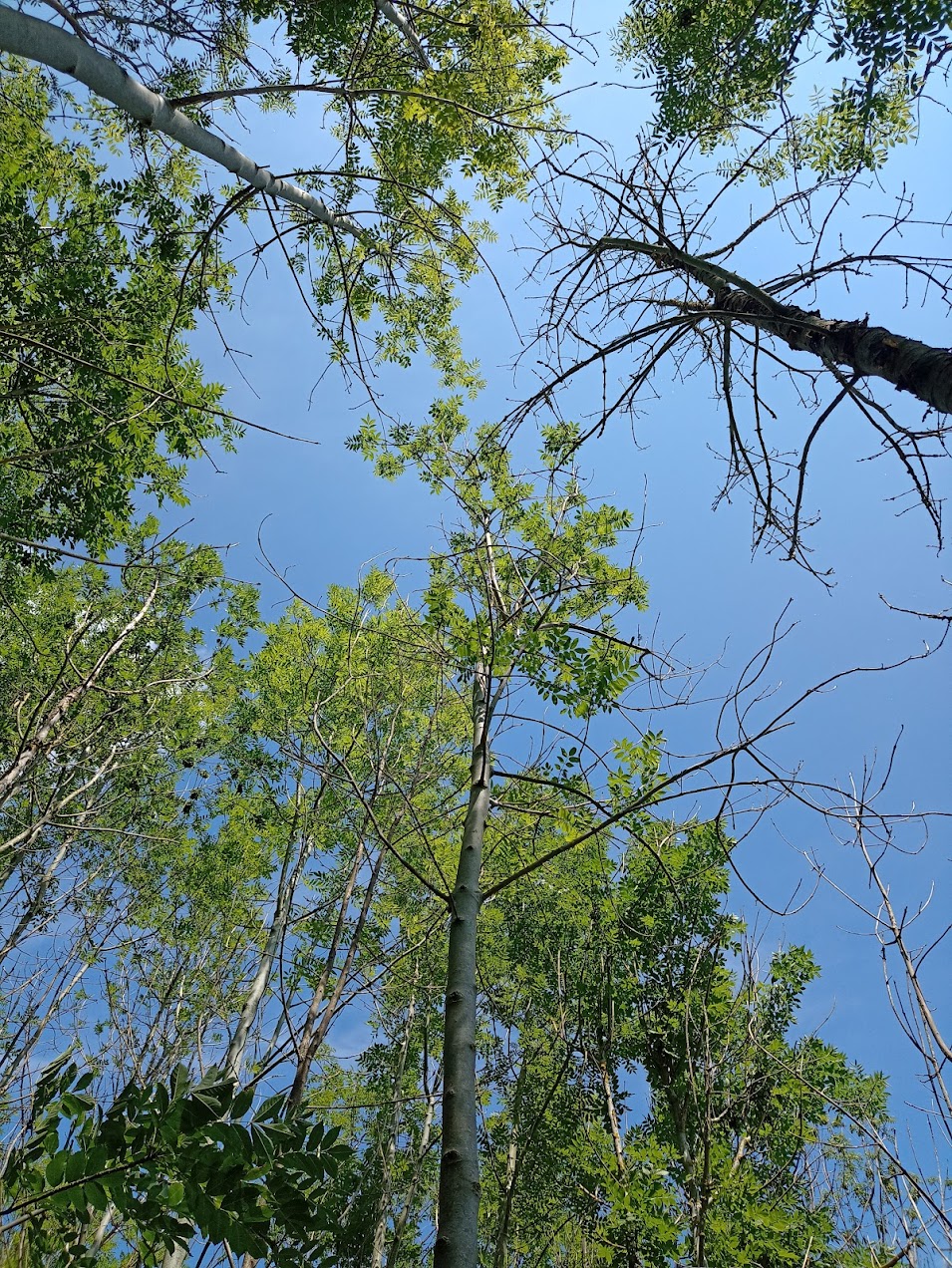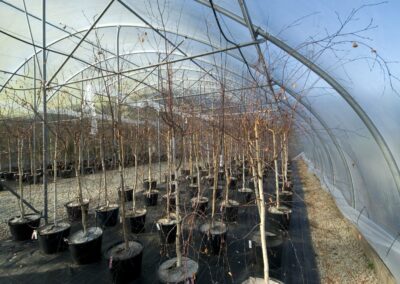Investigating ash health genomics after long-term ash dieback exposure
Project leads Prof Richard Buggs, Dr Laura Kelly, Dr Daniel Wood | Royal Botanic Gardens, Kew
Lead organisation Royal Botanic Gardens, Kew
Collaborators Queen Mary University of London; Future Trees Trust
Project status Active
Project funding 25-26 £364,634
Research outcomes Adaptation | Recovery
Context
Ash dieback is a highly destructive disease of ash (Fraxinus excelsior) trees caused by an invasive fungus called Hymenoscyphus fraxineus. This fungus has spread widely across Europe and has killed large numbers of native European ash trees. However, a small number of ash trees have experienced less damage from the fungus, and previous research has found certain genetic markers that are linked to better health when exposed to the fungus.
Being able to select genetically ‘superior’ trees when they are seedlings, could speed up the efforts to breed trees that are more resistant to the disease. This project will build on existing research by studying older ash trees and those that have been exposed to the disease for a longer period.
Research aims and objectives
Aim:
Better understand how natural resistance works over time, and to develop tools that can predict a tree’s resistance to ash dieback just from its DNA.
Objectives:
Re-analysis of existing ash tree resources
- Use the latest genetic tools and methods to reanalyse DNA from 1,200 ash trees collected in 2017, which will provide a more accurate view of which genetic traits are linked to ash dieback resistance over a short period.
- Compare differences in the traits between younger and older trees from four natural woodlands to confirm that natural selection is already favouring more resistant trees within a single generation.
Improved understanding of the genetic basis of ash dieback resistance
- Undertake a study on 500 healthy, and 500 dead ash trees, compare their DNA to identify genetic differences linked to long-term survival, and compare against earlier results that focused on short-term ash dieback resistance.
Generation of an ash dieback prediction model using whole-genome data
- Use this new genetic data to build a prediction model to identify how resistant a tree is to ash dieback based on its DNA.
- Measure the accuracy of the model by how closely its predictions match the health of 400 trees planted in a 1995 ash trial.
Expected outcomes
-
Improved understanding of the genetics behind why some ash trees resist ash dieback.
-
A more accurate prediction model to identify which trees are likely to stay healthy over the next five years, which will help identify the best trees to use in breeding programmes.
-
A new prediction model to identify trees which are likely to survive 13 years or more with ash dieback.
-
Testing the accuracy of these prediction tools using 30-year-old trees.
-
Develop new methods for analysing tree DNA.
-
Develop new tools to speed up the breeding of disease-resistant ash trees.
Further resources linked to this project
Living Ash Project (2013-2024)
The Living Ash Project was a collaboration between the Future Trees Trust, Forest Research, and Royal Botanic Gardens, Kew that ran from 2013 to 2024.
The project aimed to identify a large and diverse number of ash trees with good tolerance to ash dieback (Hymenoscyphus fraxineus), to secure this material for further breeding work, and to quickly make this material available to industry. Selected trees were further screened for tolerance in two different ways, via chemical fingerprinting and directly through controlled inoculations.
CFP Pilot Project (2021-2022)
See previous research on this topic from CFP pilot project: Consolidating and curating datasets for ash genomics.
CFP Phase 1 Project (2022-2025)
See previous research on this topic from CFP Phase 1 project: Transforming ash genomics: Creating a pangenome to understand ash dieback resistance.
CFP Intern - Liam (2025-2026)
Find out how intern Liam is supporting this project throughout his sixth-month Centre for Forest Protection internship (Oct 25 – Mar 26):
CFP Intern - Cas (2025-2026)
Find out how intern Cas is supporting this project throughout her sixth-month Centre for Forest Protection internship (Oct 25 – Mar 26):
Title image: Crown Copyright. Forestry Commission.
Body image: Daniel Wood, Royal Botanic Gardens Kew.
Glossary & Key Terms
Ash (Fraxinus excelsior)
A native broadleaved tree with excellent timber properties that is an important host for many species of flora and fauna and consequently of high ecological value.
Ash is under severe threat from ash dieback disease (Hymenoscyphus fraxineus), and its abundance in the British landscape is likely to decrease. The ability to plant ash is now severely restricted due to concerns over tree health. Ash is categorised as a principal tree species. For more information, see Ash (AH) – Forest Research.
Ash dieback (Hymenoscyphus fraxineus)
Ash dieback is a highly destructive disease of ash trees (Fraxinus species), especially the United Kingdom’s native ash species, common ash (Fraxinus excelsior). It is caused by a fungus named Hymenoscyphus fraxineus (H. fraxineus), which is of eastern Asian origin. For more information, see Ash dieback (Hymenoscyphus fraxineus) – Forest Research.
Genetic markers
Specific DNA sequences that vary between individuals and can be used to identify trees, assess genetic diversity, and track traits like growth or disease resistance.
Genome
The complete set of genetic material in an organism. It includes all of the organism’s DNA, which contains the instructions needed for growth, development, functioning, and reproduction.
Share this project on social media
Related Projects
Our Partners
Social media
Explore
Newsletter
Contact
© 2022 Centre for Forest Protection. All rights reserved.



